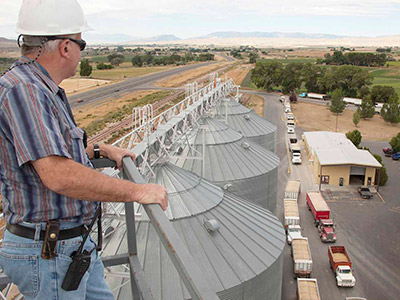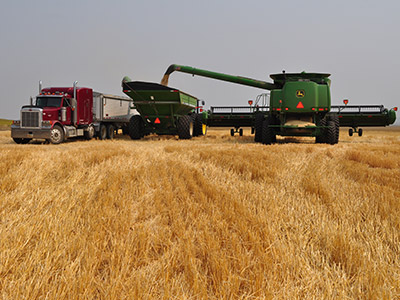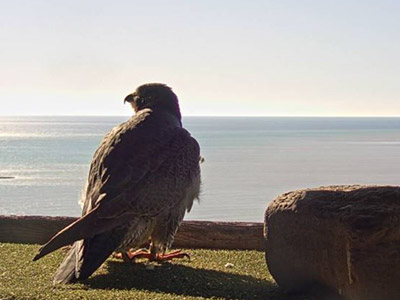
We believe it is our inherent responsibility to be a good steward of natural resources by operating in an environmentally responsible manner.
Briess is guided by a comprehensive Seed to Specialty™ sustainability program that extends beyond the environment, reaching into the communities in which we live and our number one resource — our people.
We strive to be a good neighbor, engaging in our communities and creating a culture that motivates and inspires our staff, suppliers and trades.
Our sustainability program builds upon our environmental Green with Briess™ program, which initially succeeded in decreasing Briess’ environmental impact by 10 million fewer miles being driven each year since 2006.



The foundation for our Seed to Specialty™ sustainability program was laid in 2013 when Briess acquired a major grain elevator operation in the unique agricultural Bighorn Basin of Northwestern Wyoming/Southern Montana. The purchase immediately connected Briess with a network of 250+ experienced barley growers.
In 2014, Briess acquired a major grain elevator and malting operation in Manitowoc, WI, to receive, process and store grain. Commissioning a large malthouse on the property in 2015 brought to three the number of malthouses operated by Briess in Wisconsin.
The new assets were strategically selected to assure a consistent supply of sustainable, high quality barley for years to come, as well as for their unique characteristics which match our commitment to the environment. Connected by rail, the two modern facilities offered Briess the ability to source raw barley grown with less environmental impact, streamline raw barley transportation, improve operating efficiencies, expand innovative problem solving, and deepen our commitment to our customers, communities and staff. The acquisitions made Briess a vertically integrated grain processor in control of its barley supply, and put in place resources for a Seed to Specialty™ sustainability program.
Key initiatives anchoring our multifaceted Sustainability Program include:
Since barley represents the largest volume of raw materials purchased by Briess, securing a consistent source for our growing needs that meet our quality and environmental expectations was important.
The Bighorn Barley growing region in Northwestern Wyoming/Southern Montana is known for producing some of the highest quality barley in the world, due to a semi-arid climate favored by barley, flood irrigation, three-crop rotation planting and very experienced barley growing families. Those same characteristics also make it possible to produce barley using less energy, fertilizers and pesticides. By consolidating the bulk of Briess barley production in the Bighorn Basin, we achieved the ability to begin each Seed to Specialty™ cycle with barley produced with less environmental impact:
Additional sustainable initiatives at other Briess operations further lessen our environmental impact:
At Briess, we take pride being a fifth generation family company with a rich history in malting and food ingredients. A decades-long family tradition lends to a sense of connection that extends to our employees and the communities in which we operate:
We strive to be an employer of choice, providing living wages and family-oriented benefits that promote health and well-being. The communities where we work are foundational to our way of life, and our engagement reflects a humble appreciation for the privilege of being a good neighbor. Our roots run deep, as does our commitment to support local charities, work cooperatively with schools and other businesses, and in partnership with municipalities. Our ability to optimize energy and water usage is greatly enhanced with cooperative efforts forged with local and regional utilities.
Snapshot of partnerships, engagement and support
The Briess family tradition of helping our customers succeed through quality and innovation is carried on every day by our number one resource — our people. To help our people succeed, we promote a family culture that motivates, inspires and encourages staff to help them realize their full potential professional and personally. The benefits of well trained, forward-thinking innovators and problem-solvers extends beyond the workday, impacting the health and well-being of families and communities.
To help our employees succeed and love what they’re doing, we have identified these critical areas of focus:
Ongoing staff development includes classes and programs to help improve job performance, increase efficiency and develop problem-solving skills. At any one time, multiple staff are participating in trade and college-level coursework toward certificates and degrees. Reimbursement for satisfactorily completing classes is available. And active memberships in trade-related organizations is encouraged.
Most recently, several apprenticeship programs with the Chilton High School were initiated in the Quality and Maintenance departments.
Elevator doubles as falcon home
From the top of the 244′ Briess Elevator in Manitowoc, the panoramic view of Lake Michigan is a stunning sight. To the Peregrine Falcons that nest there, it’s home. (Watch our live Falcon Webcam here.)
The Peregrine Falcon nest was installed in 1992, part of the Wisconsin Peregrine Falcon Recovery Program. Founded by Greg Septon, a former researcher at the Milwaukee Public Museum, the Recovery Program was developed to re-populate Peregrine Falcons. They were put on the U.S. Endangered Species list in 1969 after being almost eradicated by the pesticide DDT. After DDT was banned in 1972, it cleared the path for the re-population effort.
The Manitowoc elevator, acquired by Briess in 2014, was one of many Wisconsin locations that erected nesting boxes at the request of Mr. Septon. In 1998, it attracted its first pair of nesting Falcons. Since then, Peregrines have been successfully nesting in the elevator, producing more than 60 eyasses. Mr. Septon offers Briess nest care and instructions regarding the nesting Falcons. He also bands the young, which helps Mr. Septon and volunteer observers track the birds. To share the nesting experience and provide a tool to help Septon track the birds, Briess installed a webcam in 2015. It streams to a webpage that is open to anyone wishing to watch the birds in action. Infrared lighting has since been added for 24/7 online viewing.
The Recovery Program and similar groups in other regions, with the assistance of organizations like Briess, are making progress. While the Peregrine population had been completely eradicated east of the Mississippi River by the late 1960s, today there are an estimated 1,650 breeding pairs in the U.S. and Canada. For more information about the Manitowoc nest and Peregrine activity, visit the Briess blog.
About Peregrines
The Peregrines typically arrive in February, after wintering in other locations. Septon has tracked Manitowoc-produced Peregrines to Milwaukee and as far south as Austin, TX. Peregrine Falcons commonly return to the same nest site year after year and mate with the same partner, but younger males and other adult males and females in the area may be looking for new territory to claim. After settling down with a mate, the female lays a clutch of three or four eggs in late March or April, at 2-3 day intervals. The young eyasses are nurtured for three months at which point they have fully fledged and are flying. Over the next month, they may periodically revisit their nest site, but as they build confidence and courage, they will expand their boundaries and travel to new territories. They are also learning to hunt on their own, teaching themselves to maneuver through the sky.
Peregrine Falcons are known as the world’s fastest animal, able to perform aerial dives that exceed 200 miles per hour. Their bodies are uniquely equipped for these high speeds. Unlike other birds, the Peregrine’s nostrils have a special, aerodynamic bone shape — similar to that of a jet engine — that breaks the air from rushing into their small bodies. If they did not have this adaptation, the force of air at 200+ mph would burst their lungs.
They also have a thicker than usual “keel”, or breastbone, making them very durable at high speeds and able to take on a great impact when charging pray. Furthermore, these unique falcons have a third eyelid, allowing them to keep their eyes on the prey at top speeds — making them capable of spotting prey from a kilometer away.